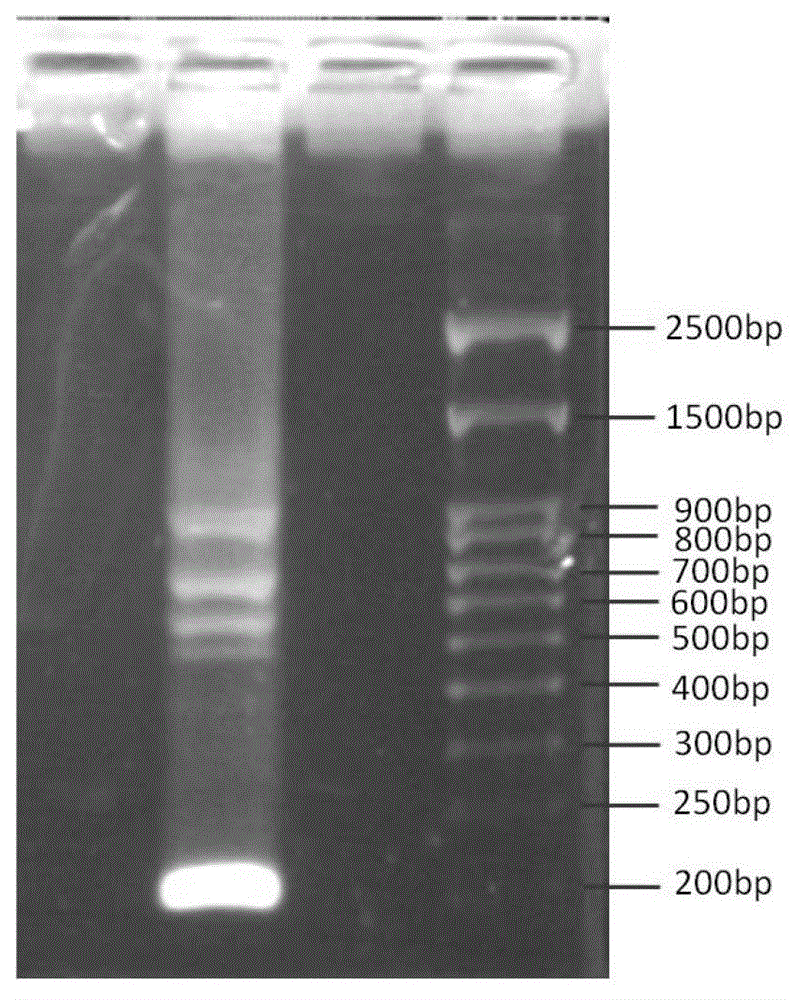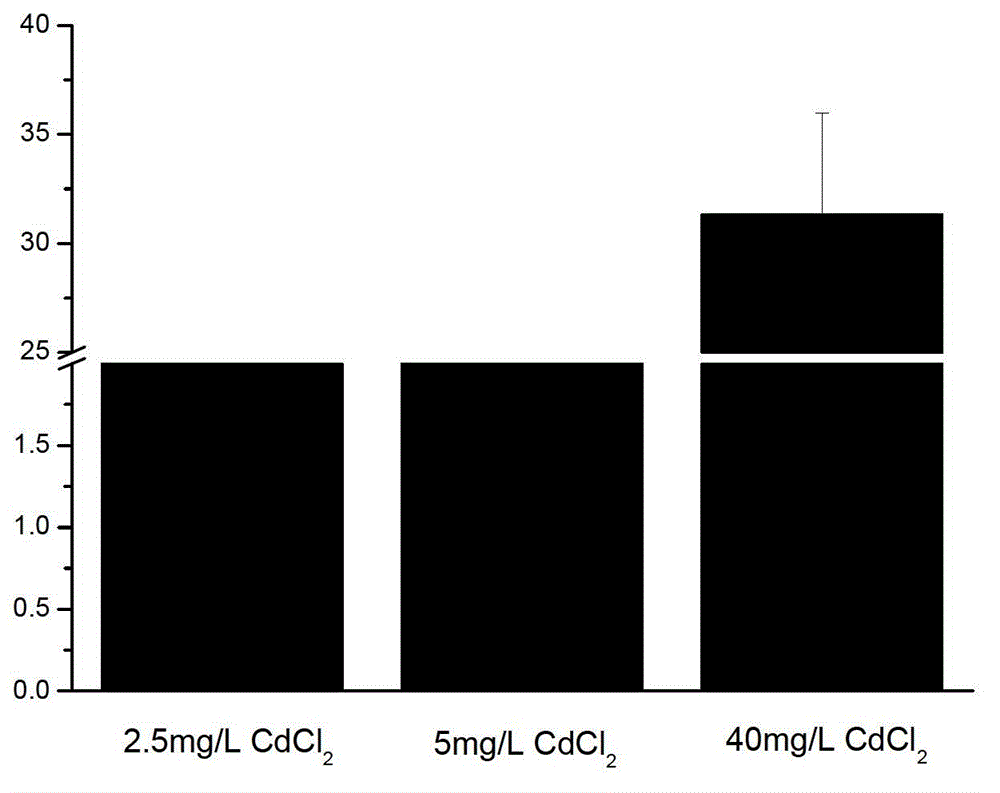Hyperaccumulator solanum nigrum metallothionein gene (MT-L3) sequence and cloning method thereof
A technique for metallothionein and hyperaccumulation plants, which is applied in the field of hyperaccumulation plant nightshade metallothionein gene (MT-L3) sequence and its cloning, and can solve the problem that the mechanism is not very clear.
- Summary
- Abstract
- Description
- Claims
- Application Information
AI Technical Summary
Problems solved by technology
Method used
Image
Examples
Embodiment 1
[0018] Solanum nigrum MT-L3 gene is shown in SEQ ID NO.1:
[0019] atgacggaca agtgtagcaa ttgcgattgc gctgatgtca gccaatgcgt gaggaaggagagccaatatg atgtcgtcat cgtcgaaaag agctacatcg agacggtggt gatgatggacgttggagcgg aagaacatga tggaaaatgc aaatgcggca gcagctgcgc ctgtgttaactgcacttagtg ctcatta
[0020] (a) Sequence features:
[0021] ●Length: 200bp 1-198 nucleotides
[0022] ●Type: Nucleotide sequence
[0023] ●Chain type: single chain
[0024] ●Topology: Linear
[0025] (b) Molecular type: double-stranded DNA
[0026] (c) Assumption: No
[0027] (d) Antonym: No
[0028] (e) Original source: Solanum nigrum
Embodiment 2
[0029] The cloning method of embodiment 2 Solanum nigrum MT-L3 gene
[0030] The method for cloning the above-mentioned MT-L3 gene from Solanum nigrum is:
[0031] (1) Extracting total RNA from the leaves of the fresh hyperaccumulated plant Solanum nigrum;
[0032] (2) Using total RNA as a template, the first-strand cDNA was synthesized using reverse transcriptase AMV and random primers (Random Primers, Invitrogen, USA);
[0033] (3) Using the synthesized first-strand cDNA as a template, use degenerate primers MT-L3-F and MT-L3-R for PCR amplification, and the amplified fragment size is about 200bp (see figure 1 );
[0034] (4) After the PCR product was cloned into the pMD-18T vector, the positive clones were taken and sequenced to obtain the gene sequence of the hyper-enriched plant Solanum nigrum type 3 metallothionein protein.
[0035] Wherein the primers include:
[0036] MT-L3-F: 5'-ATGTCGGACAAGTGYRGYARTTG-3'
[0037] MT-L3-R: 5'-TTAATGAGCACAAGTGCAGTTAAC-3'
[0038]...
Embodiment 3
[0075] Example 3 Expression of hyper-enriched plant Solanum nigrum type 3 metallothionein under different concentrations of Cd stress
[0076] The Solanum nigrum seedlings shown in the above-mentioned sequence table SEQ ID NO.1 are planted in the soil with different concentrations of Cd (2.5mg / kg, 5mg / kg and 40mg / kg) and no Cd added to the maturity stage, take different The total RNA of Solanum nigrum leaves of the treatment group (2.5mg / kg, 5mg / kg and 40mg / kg) and the control group (no Cd treatment), the total RNA extraction method refers to the above example, using a fluorescence quantitative PCR instrument (ABIStep-One Plus Real Time PCR System, USA) for differential expression analysis, quantitative PCR primers were MT-L3-F and MT-L3-R. The results showed that Cd stress treatment could significantly induce the expression of MT-L3, which was 2.4 times, 3.7 times, and 31.3 times that of the control, respectively (see figure 2 ), which is closely related to the ability of S...
PUM
| Property | Measurement | Unit |
|---|---|---|
| molecular weight | aaaaa | aaaaa |
Abstract
Description
Claims
Application Information
 Login to View More
Login to View More - R&D
- Intellectual Property
- Life Sciences
- Materials
- Tech Scout
- Unparalleled Data Quality
- Higher Quality Content
- 60% Fewer Hallucinations
Browse by: Latest US Patents, China's latest patents, Technical Efficacy Thesaurus, Application Domain, Technology Topic, Popular Technical Reports.
© 2025 PatSnap. All rights reserved.Legal|Privacy policy|Modern Slavery Act Transparency Statement|Sitemap|About US| Contact US: help@patsnap.com



